Megan M. Gregory, Blog Contributor, Cover Crop Nerd, and Graduate Research Assistant, Cornell University
Email: meganmgregory1@gmail.com
Website: http://blogs.cornell.edu/gep/
This article is part of a four-part series about cover cropping in vegetable gardens. Stay tuned for Part III next week.
- Part I: Introduction to Cover Cropping
- Part III: Selecting Cover Crops for Vegetable Gardens
- Part IV: Planting and Managing Cover Crops in Vegetable Gardens
Vegetable gardeners are turning to cover crops to improve soil quality, add nitrogen (N) to the soil through legume N fixation, suppress weeds, and attract beneficial insects in their gardens. In this article I’ll introduce several groups of cover crops. Cover crop species can be broadly grouped into non-legumes (those that do not fix N, but take up and recycle nutrients left in the soil) and legumes (which fix N). Mixtures of non-legumes and legumes may offer the benefits of both types of cover crops.
Non-legume cover crops
Non-legume cover crops include species in several plant families:
- Grasses (Poaceae) include oats (Fig. 1a), winter rye (Fig. 1b), sorghum-sudangrass, and Japanese millet.
- Brassicas and mustards (Brassicaceae) include mustards, rapeseed, and tillage radishes.
- Buckwheat (Fig. 1c, Polygonaceae) is a popular summer cover crop.
Benefits of non-legumes: 1, 2
- Prevent erosion – Non-legumes establish and grow quickly, provide rapid soil cover, and have dense, fibrous root systems that hold soil in place.
- Build soil organic matter – Non-legumes produce large amounts of biomass, which contributes to soil organic matter.3
- Retain and recycle nutrients – Non-legumes take up nutrients left in the soil after vegetable harvest, which prevents them from being leached out of the garden during heavy spring rains.
- Suppress weeds – With their vigorous growth and high biomass, non-legumes can successfully compete with weeds, even in fertile soils. Some non-legumes (winter rye, sorghum-sudangrass, and Brassicas) also release chemicals that inhibit weed germination and growth. Residues of grass cover crops also provide a weed-suppressive mulch that lasts much of the growing season.
- Disease management — Some Brassicaceae cover crops also release chemical compounds that may help control soil-borne pathogens and parasites(e.g., fungi, nematodes) upon incorporation. Winter rapeseed (Brassica napus) greatly reduced Rhizoctonia damage and Verticillium wilt in potato crops.1, 2
Drawbacks and constraints of non-legumes:
- Slow nutrient supply and/or N immobilization — Non-legumes have lots of carbon (C) relative to N during growth, which causes them to decompose slowly after mowing or incorporation. As a result, nutrients in non-legume residues may not be available to vegetable crops quickly. If non-legume residues are incorporated into the soil, they may actually immobilize (“tie up”) N for a few weeks as decomposer microbes take up soil N to balance the large amount of C in the plant residues they’re breaking down.1 For this reason, it’s best to wait several weeks after incorporating a non-legume before planting vegetable crops.
Legume cover crops
Legume cover crops include field peas (Fig. 2a) crimson clover (Fig. 2b), hairy vetch (Fig. 2c), and cowpeas. They provide many of the same benefits of non-legumes, with the additional benefits of nitrogen fixation and feeding pollinators.
Additional Benefits of legumes:
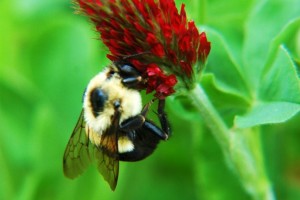
- Nitrogen fixation – Legume cover crops add ‘new’ nitrogen (N) to the soil through N fixation, which occurs when N-fixing bacteria in legume roots take N from the air and convert it to a form the plant can use. When legume residues break down, this N is added to the soil for food crops.5
- Build soil organic matter and soil quality – While legumes don’t usually produce as much biomass as non-legumes, they also help build soil organic matter.6, 7 Legumes are also excellent soil conditioners, because legume roots ooze sugars that stick soil particles together in larger crumbs, or aggregates.8, 9 This helps the particles fit together loosely, making for a soft, porous soil.
- Attract beneficial insects – Many legume species provide resources for beneficial insects. Crimson clover provides pollen and nectar for native pollinator bees (Fig. 3), and both crimson clover and hairy vetch host predators such as lady beetles, which eat many pest insects.1
Drawbacks and constraints of legumes: 1, 3
- Slow growth, lower biomass — Legumes establish and grow more slowly than non-legumes, and usually produce lower biomass.
- Less weed suppression — Legumes may not suppress weeds as effectively as non-legumes, particularly in soils with high N fertility. In Brooklyn gardens, legumes suppressed weeds in soils with low to moderate N fertility, but not in soils with high N fertility.4 Legume residues break down quickly, so weed control by legume mulch may be short-lived.
- Seed cost — Legume seeds are more costly than non-legumes.
Cover crop mixtures
Mixtures of non-legumes and legumes often combine the benefits of both types of cover crops.
Benefits of nonlegume/legume mixtures:
- Produce large biomass and suppress weeds effectively — In many cases, cover crop mixtures provide more complete soil cover, greater biomass production, and more effective weed suppression than plantings of just one species.1, 3 This is because mixtures of grasses and legumes use water, nutrients and sunlight very efficiently due to complementary root systems and growth habits. Grasses (like rye) also provide support for viny legumes (like hairy vetch), which allows the legume to access more light.
- Increase N fixation — Planting legumes with grasses may enhance N fixation. Grasses out-compete legumes for soil N, forcing the legume to rely on N fixation. As long as the grass doesn’t suppress legume biomass (see below), this can increase the total amount of N fixed. Promising grass/legume mixtures for N fixation include rye/vetch and Japanese millet/cowpea.10
- Optimize nutrient cycling and nutrient supply to crops — Mixtures provide the benefits of N ‘scavenging’ by non-legumes and N additions by legumes.1 At maturity, grass-legume mixtures often have an ideal C:N ratio of 25:1 – 30:1, which promotes a steady release of N for vegetable crop use as the cover crop plants decompose. N-rich legume residues prevent N tie-up that can occur when incorporating pure grass residues, while C-rich grass residues slow the breakdown of legume residues such that N is released at a rate that vegetable crops can use through the growing season.2, 11
Drawbacks and constraints of nonlegume/legume mixtures:
- Reduced N fixation if nonlegume out-competes the legume – Mixing a non-legume with a legume may decrease the total amount of N fixed if the non-legume suppresses legume growth and biomass. This occurs in mixtures of: oats/field peas,4, 12 rye/crimson clover,4 and sorghum-sudangrass/cowpea.10 Seeding the legume at a higher rate may result in a more even distribution of nonlegume and legume biomass – gardeners can experiment to find the relative seeding rate that works best in your soil.
* * * * * * * * * * * * *
Understanding the benefits and limitations of non-legumes, legumes, and mixtures is a great starting point for selecting cover crops to plant in your garden. For guidance on choosing specific cover crops based on your vegetable crop rotation, management goals, and soil and light conditions, see Part III: Selecting Cover Crops for Vegetable Gardens.
References
(1) Clark, A. 2007. Managing cover crops profitably, 3rd ed. Sustainable Agriculture Network, Beltsville, MD. Accessed online at: http://www.sare.org/Learning-Center/Books/Managing-Cover-Crops-Profitably-3rd-Edition, 7 December 2014.
(2) Treadwell, D., N. Creamer, and K. Baldwin. 2010. An introduction to cover crop species in organic farming systems. Accessed online at: https://www.extension.org/pages/18542/an-introduction-to-cover-crop-species-for-organic-farming-systems, 7 December 2014.
(3) Snapp, S. S., S. M. Swinton, R. Labarta, D. Mutch, J. R. Black, R. Leep, J. Nyiraneza, and K. O’Neil. 2005. Evaluating cover crops for benefits, costs and performance within cropping system niches. Agronomy Journal 97(1):322-332.
(4) Gregory, M. M., L. E. Drinkwater. In preparation. Developing cover cropping practices to improve soil quality, nutrient cycling, and weed suppression in urban community gardens.
(5) Drinkwater, L. E. 2011. It’s elemental: How legumes bridge the nitrogen gap. The Natural Farmer, Summer 2011, pp. B-1 – B-6. Northeast Organic Farming Association, Barre, MA: Accessed online at: http://www.nofa.org/tnf/Summer2011B.pdf, 6 December 2014.
(6) Sainju, U. M., B. P. Singh, and W. F. Whitehead. 2002. Long-term effects of tillage, cover crops, and nitrogen fertilization on organic carbon and nitrogen concentrations in sandy loam soils in Georgia, USA. Soil & Tillage Research 63(3-4):167-179.
(7) Kong, A. Y. Y., J. Six, D. C. Bryant, R. F. Denison, and C. van Kessel. 2005. The relationship between carbon input, aggregation, and soil organic carbon stabilization in sustainable cropping systems. Soil Science Society of America Journal 69(4):1078-1085.
(8) Puget, P., L. E. Drinkwater. 2001. Short-term dynamics of root- and shoot-derived carbon from a leguminous green manure. Soil Science Society of America Journal 65(3):771-779.
(9) Haynes, R. J., M. H. Beare. 1997. Influence of six crop species on aggregate stability and some labile organic matter fractions. Soil Biology & Biochemistry 29(11-12):1647-1653.
(10) Drinkwater, L. E. 2011. A holistic view: Leguminous cover crop management in organic farming systems. The Natural Farmer, Summer 2011, pp. B-20 – B-24. Northeast Organic Farming Association: Barre, MA. Accessed online at: http://www.nofa.org/tnf/Summer2011B.pdf, 6 December 2014.
(11) Teasdale, J. R., A. A. Abdul-Baki. 1998. Comparison of mixtures vs. monocultures of cover crops for fresh-market tomato production with and without herbicide. HortScience 33(7):1163-1166.
(12) Schipanski, M. E., L. E. Drinkwater. 2012. Nitrogen fixation in annual and perennial legume-grass mixtures across a fertility gradient. Plant Soil 357(1-2):147-159.
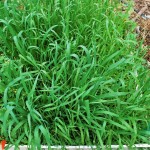
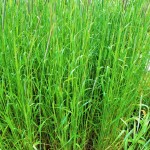
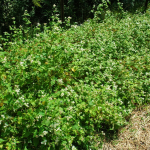
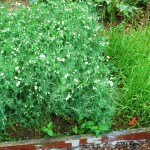
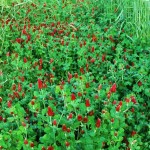
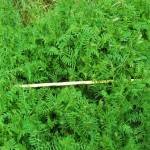
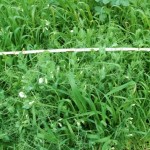
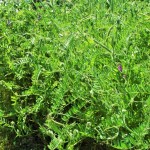
Thanks for the cover crop recommendations! I need to become more conscientious about using them in my home garden.
An addition to the “Benefits” categories should be that cover crops support soil life. Keeping living roots in the soil after and before the main crop supports rhizosphere-associated symbionts that might not be able to maintain healthy populations if all that’s available is dead matter.
Thanks for this insight Brian! Indeed, cover crops are important for nourishing beneficial soil life. For more on using cover crops to encourage mycorrhizal fungi, see my response to another reader’s comment on Part I.
Of course, there is still much to learn about how to fine-tune cover cropping practices to support beneficial soil microbes – soil life is just so hard to study! But a whole generation of ‘microbial ecologists’ are bravely approaching this task, so I imagine we will learn much in the next few decades.
Cover crops, great idea, do they take nutrients and other good stuff from your main crop?
This is a similar question to one asked about the first blog post, so I’m going to paste my answer to that one! Hope it helps! – Megan
Cover crops are usually planted IN BETWEEN food cropping cycles (when the soil would otherwise be bare) so they don’t compete directly with your food crops. For example, summer cover crops like buckwheat fit nicely in the late June – mid-August window between early spring crops (like lettuce) and transplanted crops for a fall harvest (like broccoli). Over-wintering cover crops are planted in September and October — near the end of the growing season — to protect the soil over the winter. For more information on designing vegetable rotations with cover crops, stay tuned for Part III of this series. You can also check out some handouts I made on garden planning (for USDA Zone 6 at: http://blogs.cornell.edu/gep/files/2013/08/Garden-Planning-Ithaca-1aow3xc.pdf, and Zone 7 at: http://blogs.cornell.edu/gep/files/2012/09/Garden-Planning-Handout-1bb9z1l.pdf).
Often gardeners may wish to ‘under-seed’ over-wintering cover crops beneath and between food crops finishing up for the season, so the cover crops can get established before the winter. In this case, the food crops have such a big ‘head start’ that competition from cover crop seedlings is not a problem.
One situation where cover crops may have a negative effect on the next food crop is when gardeners incorporate a pure stand of a non-legume (say, winter rye) and fail to wait a few weeks before planting veggies. This can result in temporary ‘nitrogen tie-up’ as microbes take up soil nitrogen to balance all the carbon in the rye residues they’re breaking down (see this article, “Drawbacks of non-legumes.”) To mitigate this problem, I suggest planting grass-legume mixtures, since the high nitrogen content of the legume will balance out the high carbon content of the non-legume.
There has been some research on ‘inter-seeding’ cover crops with growing food crops, often for weed control between rows of vegetables on farms. When water is sufficient, legumes like hairy vetch can be planted between rows of vegetables 20-30 days after transplanting without harming yield. Grasses like oats are probably too competitive even when planted 30 days after transplanting (Brainard et al., 2004).
Bottom line: When cover crops are planted in a different seasonal niche than food crops, or when legumes are interseeded at least a month after transplanting food crops, competition should not be a problem. Most cover crops will actually increase the amount of nutrients available to the next crop. Legumes can add nitrogen to the system through nitrogen fixation, and Non-legumes (like rye) take up nutrients in the soil at the end of the growing season, which might otherwise be lost to leaching (this happens when nutrients in the soil dissolve in water, and the water drains below the root zone). Then, when the cover crop residues are returned to the soil, the nutrients are released for future food crops as the cover crops decompose.
Hope this helps answer your question!
Reference:
Brainard, D.C., R.R. Bellinder and A.J. Miller. 2004. Cultivation and interseeding for weed control in transplanted cabbage. Weed Technology 18:704-710.